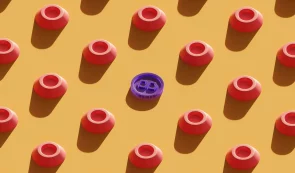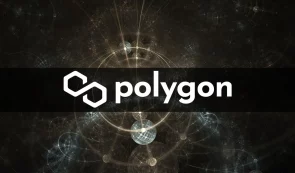What is Polygon
MATIC is Polygon’s cryptocurrency, a layer two protocol and framework for building and connecting Ethereum-compatible blockchain networks.
Polygon launched under the name Matic Network in 2017 and is touted as a solution that improves on some of the more cumbersome aspects of Ethereum (ETH). The protocol aims to make transactions faster and cheaper on Ethereum using side chains – blockchains that run in parallel with the main Ethereum chain and can carry a larger load.
Matic is a relatively popular cryptocurrency that regularly ranks among the top 15 by market capitalization. The network supports more than 7,000 decentralized applications (dApps) that work without intermediaries.
Project History
Polygon was launched in October 2017 and was co-founded by Jainti Kanani, Sandeep Nilwal, and Anurag Arjun, two experienced blockchain developers, and a business consultant.
Before transitioning its network in 2019, the Polygon team had immensely contributed immensely to the Ethereum ecosystem. The team has worked on implementing MVP Plasma, the WalletConnect protocol, and the Dagger real-time updates tool in Ethereum.
Kanani is one of the two developers currently serving as CEO of Polygon. His role helps implement Web3, Plasma, and the WalletConnect protocol at Eterium. Prior to his involvement in the blockchain space, Kanani worked as a data specialist at Housing.com.
Polygon’s co-founder and COO, Sandeep Nailwal, is a blockchain programmer and entrepreneur. Before starting Polygon, he was CEO of Scopeweaver and CTO of Welspun Group.
Anurag Arjun is the only co-founder of Polygon who is not a programmer. As a product manager, he has worked at IRIS Business, SNL Financial, Dexter Consultancy, and Cognizant Technologies.
How does Polygon work?
Polygon combines the Plasma Framework and blockchain architecture for proof of stake (PoS). Plasma, which Ethereum co-founder Vitalik Buterin proposed, enables the easy execution of scalable and autonomous smart contracts.
Polygon boasts up to 65,000 transactions per second per side chain and a respectable block confirmation time of less than two seconds. The framework in question also enables the creation of globally accessible decentralized financial applications on a single underlying blockchain.
Plasma gives Polygon the potential to house an unlimited number of decentralized applications on its infrastructure without experiencing the usual drawbacks inherent in PoW chains.
Polygon uses a modified proof-of-stake consensus mechanism that allows consensus to be reached on every block – unlike the traditional method where multi-block processing is required. Successful validators in the Polygon network are rewarded with MATIC. This token is used to manage and protect the Polygon network and pay network transaction fees.
Unlike some other cryptocurrencies with an unlimited supply, the supply of MATIC is limited – there will never be more than 10 billion coins in circulation. Side chains can be built using one of the following methods to scale the design:
- Plasma chains – aggregate transactions into blocks that are fed a single path to the Ethereum blockchain
- zk-Rollups – Allows multiple translations to be merged into a single transaction
- Optimistic Rollups – Similar to Plasma chains, but with the ability to scale to Ethereum smart contracts as well
Examples of decentralized applications that are built on Polygon include Sushi (DEX), Augur – a market prediction platform, and Ocean Protocol – a platform that allows businesses and individuals to exchange and monetize data and data-driven services.



